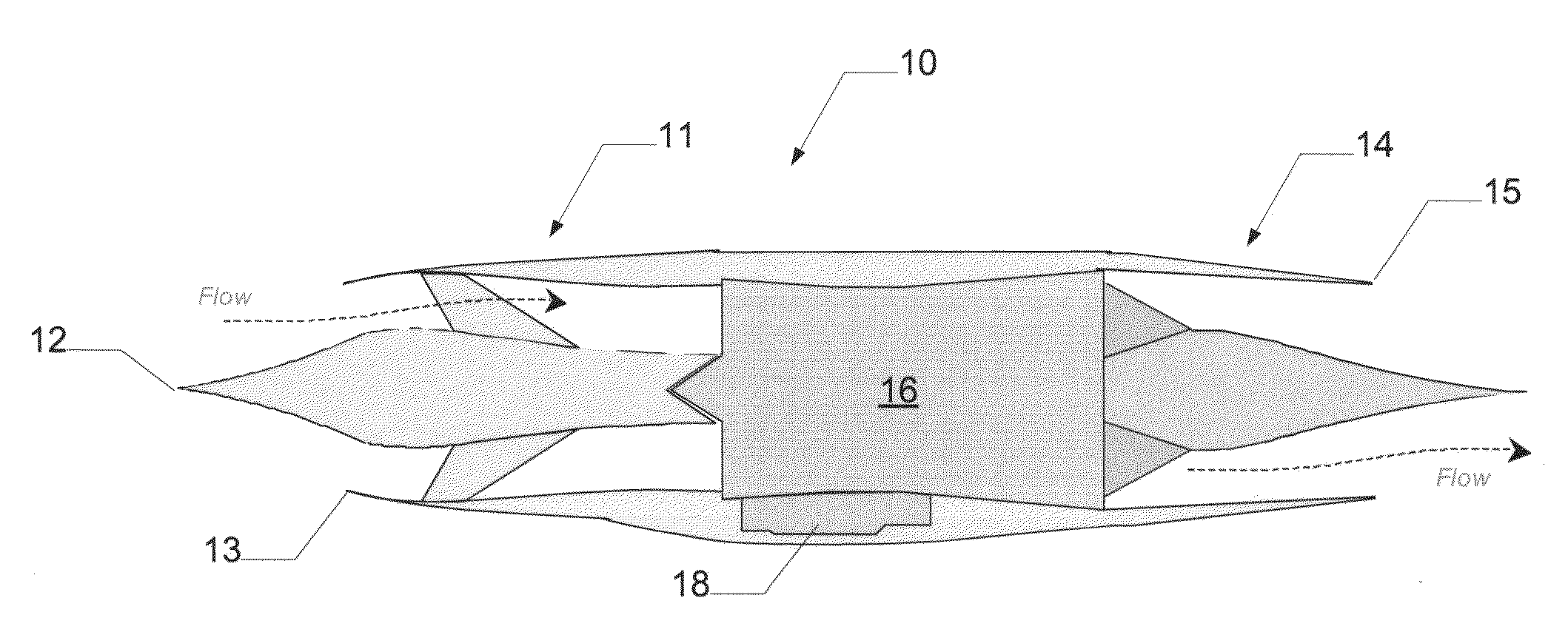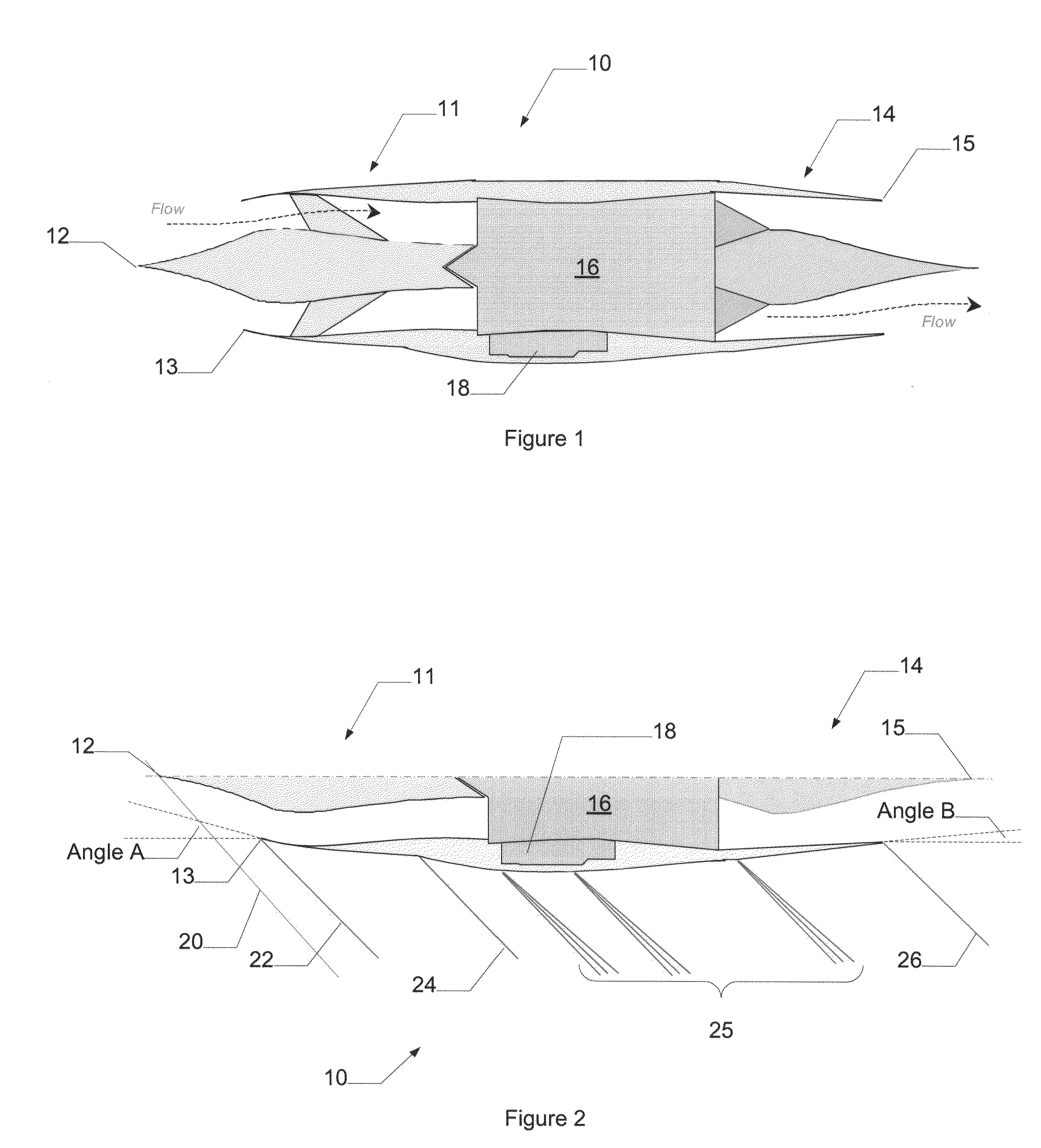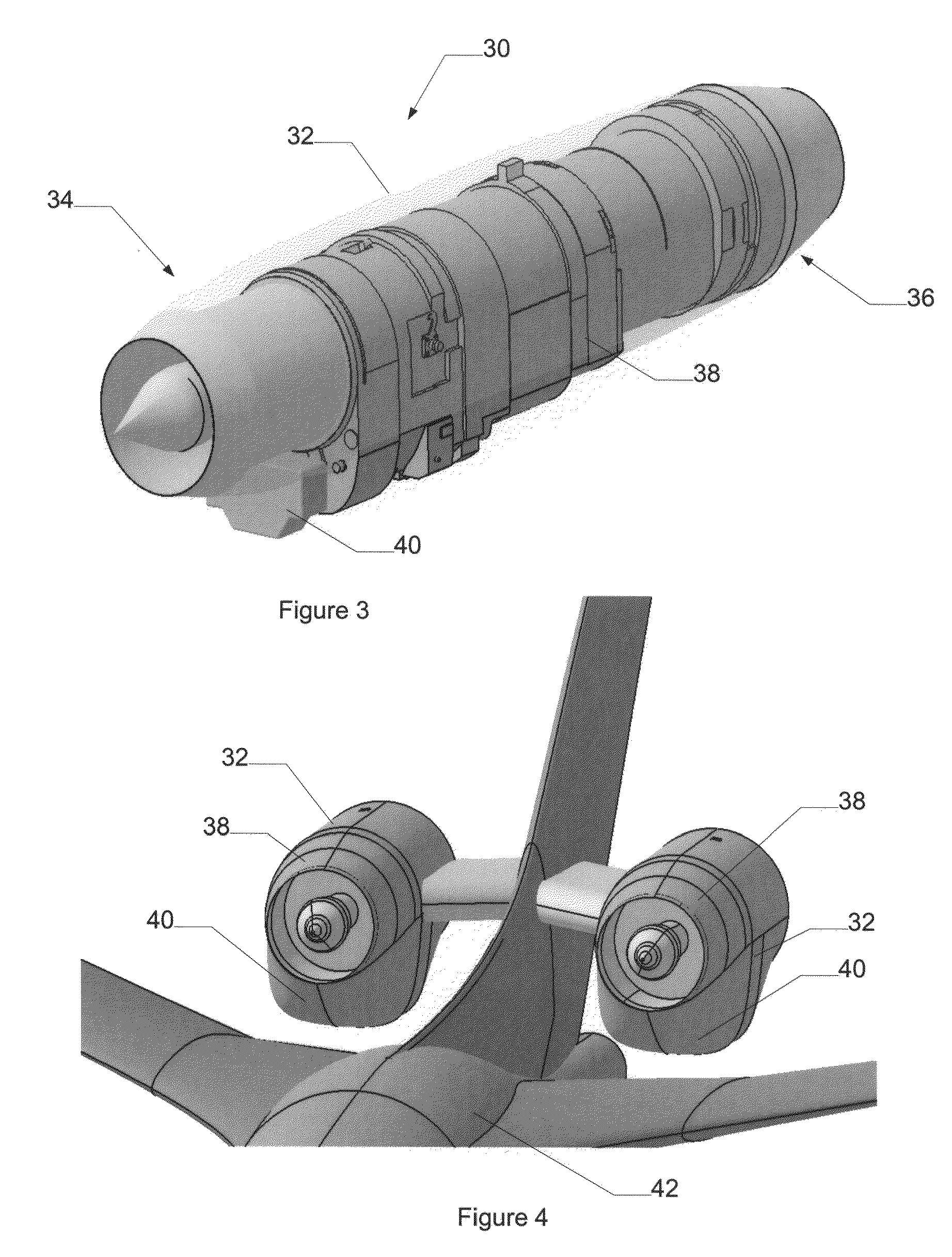Low shock strength propulsion system
a propulsion system and shock strength technology, applied in marine propulsion, vessel construction, composite engine plants, etc., can solve the problems of affecting the viability of conventional external compression inlets at high supersonic mach numbers, generating strong shocks off the supersonic inlet and the body of the nacelle, and causing localized interference drag
- Summary
- Abstract
- Description
- Claims
- Application Information
AI Technical Summary
Benefits of technology
Problems solved by technology
Method used
Image
Examples
Embodiment Construction
[0046]The present disclosure will now be described more fully with reference to the Figures in which various embodiments of the invention are shown. The subject matter of this disclosure may, however, be embodied in many different forms and should not be construed as being limited to the embodiments set forth herein.
[0047]Embodiments of the invention relate to supersonic nacelle and engine configurations that include a bypass flow around the engine. Design considerations may be used when employing a nacelle incorporating a bypass flow around the engine. For example, an expanded design space may include sonic boom impact, cowl drag, airframe interference drag, subsystem complexity, and alternative structural design techniques, all of which may be optimized against a propulsion system configuration that favors a more streamlined, albeit enlarged, nacelle shape. Growing the forward cowling diameter to better streamline the forward nacelle results in additional captured airflow that can...
PUM
 Login to View More
Login to View More Abstract
Description
Claims
Application Information
 Login to View More
Login to View More - R&D
- Intellectual Property
- Life Sciences
- Materials
- Tech Scout
- Unparalleled Data Quality
- Higher Quality Content
- 60% Fewer Hallucinations
Browse by: Latest US Patents, China's latest patents, Technical Efficacy Thesaurus, Application Domain, Technology Topic, Popular Technical Reports.
© 2025 PatSnap. All rights reserved.Legal|Privacy policy|Modern Slavery Act Transparency Statement|Sitemap|About US| Contact US: help@patsnap.com



